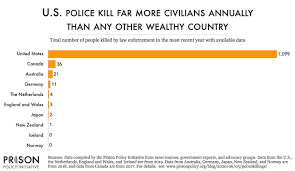
I’ve been waiting since Ferguson (2015) to hear of police leaders who are doing something to reduce the chance that one of their officers would use deadly force. But since Ferguson, when we first learned of the actual number of persons killed each year by police (about 1,000), and learned police had underreported those numbers for years, I thought change would come. Unfortunately, it did not. Instead, those numbers remain around the same year after year.
What’s going on? Why can’t our police leaders satisfactorily answer the question that comes again and again from communities of color, “When are you going to stop killing us?”
In the 1970s, it came to light that many states (including Wisconsin) permitted police to use deadly force to stop any “fleeing felon.” That meant police could legally shoot a teenaged car thief or burglar fleeing a scene because they were felons under the law.
However, a number of us who were police leaders at the time and members of the newly organized Police Executive Research Forum knew this was not right (The public outcry when a youngster’s life was taken helped many chiefs implement what we developed.) After all, our communities did not want their police to shoot kids. What did we do, even though the law permitted our officers to use deadly force in these situations? We enacted a work rule, a policy, that directed our police officers to use deadly force only when a fleeing felon was an immediate danger to the community.
Years later, the U.S. Supreme Court ruled in 1985 that police could no longer use deadly force in situations that did not present an immediate danger to others. (See Garner v. Tennessee.) However, in many cities throughout the nation, the problem was solved years ago by a work rule, rather than by waiting for a change in law.
The Court ruled in Garner that under the Fourth Amendment, a police officer may use deadly force to prevent the escape of a fleeing suspect only if the officer has a good-faith belief that the suspect poses a significant threat of death or serious physical injury to the officer or others. Just about the exact wording of the policy we implemented much earlier.
So why is this different today under the USSC ruling in Graham v. Connor in which police are given greater leeway when they can use deadly force? Why haven’t today’s leaders known about what we learned a half-century ago? In Graham, there was a claim of excessive force by police during an arrest. The Court ruled police should be subject to the objective reasonableness standard of the Fourth Amendment. In other words, the facts and circumstances related to the use of force should drive the decision, rather than any improper intent or motivation by the officer. For many police, this became a defense “I feared, therefore I shot.”
I would argue that what progressive police leadership did in the 1970s, needs to be done today. The agonizing question concerning how and when police officers in a community will be permitted to use deadly force can be answered. (I might add, that answering this question correctly will lead to rebuild lost trust and support by many community members; both are deeply needed in a free and democratic society. The answer will no longer to to eliminate or defund police agencies.
When some officers in my department questioned my new policy restricting their use of deadly force, they argued state law permitted them to do so. I responded, “Yes, state law currently permits you to use deadly force in apprehending any fleeing felon. But if you do not follow the new policy, you will not be charged in criminal court, but I will recommend you be dismissed from the department. So, please follow the new directive.”
I have written and counseled through the years that we need to implement a more reasonable standard for police use of deadly force and in order to do so, police leaders do not have to call for overturning the Graham decision, but rather by instituting a work rule – a policy — and train their officers according to it and hold them accountable.
What would that new policy be? It seems to me that the European Union has taken great measures to insure citizens in the EU would not be subjected to excessive force by police.
The EU standard raises the bar of our Graham decision to allow deadly force by police only when it is an “absolute necessity.” (See “European Convention on Human Rights and Policing.”) As to the result of such a policy we have only to look at the record of police use of deadly force among EU nations compared to our nation.
So, how about it? Can we all work together to reduce the number of citizens killed by police in our country? The pressure can and should come from community leaders and progressive police chiefs.
implementing the EU standard by policy (work rule) will reduce the number of questionable and often needless deaths of citizens, Black and White, I’m our nation.



In Maryland, by law, any use of force must be necessary and proportional. Most agencies had to amend their policies but not Baltimore PD which already complied. Same regarding sanctity of life.
LikeLike
Thanks, Gary… I am looking forward to seeing the National numbers drop. But when? Hang in there!
LikeLike
If American wealthy people and CEOs were killed more by the cops, you would see genuine real police reform.
LikeLike
David you know your history! Our Guiding Principles on Use Of Force in 2016 made the point that officers should be held to a standard that went beyond Graham. And articulated what those principles were. And our ICAT training is meant to help officers operationalize those principles.
LikeLike
Yes. But why is not this part of the dialogue today between police and community members? Would go a long way to rebuilding trust and support. I just don’t get it. Keep up the good work, Chuck! Proud to have worked with you over the years.
LikeLike